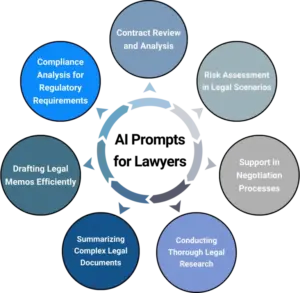Contract amendments are an essential part of managing contracts and ensuring compliance. When circumstances change, it may be necessary to update the terms and conditions of an existing contract. A contract amendment is a document that is used to make mutually agreed-upon changes, clarifications, deletions, or corrections to an existing contract. These changes can encompass various aspects of the contract, including the length or term of the contract, the fees or price for a service or product, and the duties and liabilities of the parties involved. By creating a contract amendment, all parties involved can ensure that the contract accurately reflects the updated terms and conditions that they have agreed upon.
Contract amendments are like updates to contracts when things change. They’re written changes that everyone involved agrees to and signs off on. They’re important because they keep contracts accurate and up to date. It’s like making sure everyone is on the same page. You might need one if something in the original contract needs to be changed, like the new price or the duration of the agreement. It’s all about keeping things fair and legal for everyone.
Common Scenarios Requiring Amendments
Contract amendments are commonly required in various scenarios to address changes in contract terms and incorporate new terms. Some common scenarios that may require amendments include:
- Changes in pricing or fees for goods or services
- Updates to delivery or shipping times
- Modifications to the rights and obligations of the parties involved
- Incorporating new terms or provisions to address specific requirements
These are just a few examples of scenarios that may necessitate contract amendments. It is important to note that contract amendments can also build upon previous amendments, ensuring that the contract remains comprehensive and up to date. By addressing these scenarios through contract amendments, parties can maintain a clear and accurate representation of their agreements and avoid potential misunderstandings or disputes.
How Amendments Impact Contractual Obligations?

When amendments are made to a contract, they impact the contractual obligations of the parties involved. The amended terms become part of the contract and are enforceable, while the original contract terms that have not been amended remain in full force. All parties need to understand and adhere to the actual terms of the contract, including any amendments that have been made. By doing so, parties can ensure compliance with the contractual obligations and avoid any potential breaches or disputes. It is crucial to clearly understand the amended contract terms and communicate and document any changes effectively to ensure compliance and alignment among all parties involved.
Related Article: What Are Contractual Obligations? Your Master Guide
Types of Amendments
There are different types of contract amendments, ranging from minor changes to major amendments.
- Minor Amendments: Minor changes typically involve small modifications, such as correcting spelling errors, updating names or dates, or clarifying certain provisions.
- Major Amendments: Major amendments, on the other hand, involve significant revisions to the contract, such as adding or removing entire clauses, changing pricing or terms, or renegotiating the scope of the agreement.
Minor vs. Major Amendments
Minor amendments involve small changes to the contract that do not significantly alter the overall agreement. These changes could include correcting typographical errors, updating names or dates, or clarifying certain provisions. While minor amendments may not require extensive negotiation or approval processes, it is still important to document and communicate these changes effectively to ensure clarity and understanding among all parties.
On the other hand, major amendments involve significant revisions to the contract that impact the overall agreement. These changes may include adding or removing entire clauses, renegotiating pricing or terms, or expanding or limiting the scope of the agreement. Major amendments often require thorough negotiation and approval processes to ensure that all parties are in agreement and understand the implications of the changes.
Whether the amendments are minor or major, it is crucial to document and communicate them effectively to maintain the integrity of the contract and ensure compliance with the agreed-upon terms.
Amendments vs. Addendums
The terms “amendment” and “addendum” are often used interchangeably, but they have distinct meanings in the context of contracts. While amendments modify or change existing contract terms, addendums add new terms or provisions to the original contract without modifying the existing terms.
An amendment is used when parties want to modify or update existing terms of the contract. For example, changing the pricing or extending the term of the agreement would require an amendment.
On the other hand, an addendum is used when parties want to add new terms or provisions to the original contract without changing the existing terms. For example, adding a new service or product to an existing agreement would require a supplement.
It is important to differentiate between amendments and addendums to ensure that the appropriate legal documentation is used and that all parties understand the nature of the changes being made to the contract.
Related Article: Breach Of Contract: Master How To Resolve Legal Disputes
The Process of Amending a Contract

When it comes to contract amendments, whether major or minor, the process involves renegotiating pricing or terms and potentially expanding or limiting the scope of the agreement. Major amendments require thorough negotiation and approval processes to ensure clarity and agreement among all parties involved.
It’s crucial to document and communicate amendments effectively to uphold the contract’s integrity and ensure compliance with agreed-upon terms.
Understanding when to use an amendment (to change existing terms) versus an addendum (to add new terms without changing existing ones) in a contract is vital for maintaining clarity and legal accuracy. By following the appropriate procedures for amending contracts, parties can ensure that any changes are properly documented, communicated, and understood by all involved. This helps to uphold the integrity of the original agreement while allowing for necessary updates or additions as circumstances evolve over time.
Amending a contract involves a series of steps to ensure that the changes are properly documented, agreed upon, and executed. The process of amending a contract typically includes the following stages:
Preparing for an Amendment
- Reviewing the original contract: Understand the terms, obligations, and rights outlined in the existing contract.
- Identifying the need for amendments: Determine the specific changes required and the reasons behind them.
- Collecting supporting documents: Gather any relevant documents or information that supports the proposed amendments.
- Communicating with all parties involved: Ensure that all parties are aware of the proposed changes and are willing to participate in the amendment process.
By adequately preparing for an amendment, parties can streamline the process, facilitate effective communication, and ensure that the resulting amendments accurately reflect the intentions and agreements of all parties involved.
Drafting and Negotiating Amendments
The drafting and negotiation of amendments are crucial stages in the amendment process. During this stage, parties work together to define the specific changes to be made and ensure that the resulting amendments align with their intentions and agreements. Key steps in drafting and negotiating amendments include:
- Defining the terms of the agreement: Clearly outline the changes to be made, including any additions, deletions, or modifications to the existing terms.
- Negotiating new terms: If the amendments involve changes such as pricing or scope of services, negotiation may be required to reach mutually agreeable terms.
- Reviewing and finalizing the amendments: Parties should carefully review the drafted amendments, ensuring that they accurately reflect the agreed-upon changes. Any necessary revisions or clarifications should be made before finalizing the amendments.
Through effective drafting and negotiation, parties can ensure that the resulting amendments accurately reflect their intentions and agreements and that any potential misunderstandings or disputes are addressed.
The Approval and Execution Stages
- Signing: All parties involved should sign the amendments to indicate their agreement and acceptance of the proposed changes.
- Accordance: The signed amendments should follow the agreed-upon terms and conditions.
- Full force: Once signed, the amendments become part of the contract and are enforceable. The original contract, along with the amendments, represents the updated and legally binding agreement between the parties.
By following the proper approval and execution stages, parties can ensure that the amendments are legally valid and that all parties are bound by the modified terms of the contract.
Related Article: Contract Negotiation: Proven Strategies For Collaboration
Common Obstacles to Contract Amendments

Navigating contract amendments can be tricky, but being aware of common mistakes can help organizations steer clear of potential pitfalls. Here are some key missteps to avoid:
- Lack of Clarity: Failing to clearly define the proposed changes in contract amendments can lead to confusion and disputes. It’s essential to use precise language and provide detailed explanations to ensure everyone understands the modifications.
- Skipping Legal Review: Contract amendments often have legal implications, so overlooking legal review can be risky. Legal counsel can ensure amendments comply with relevant laws and protect the organization’s interests.
- Incomplete Documentation: Inadequate documentation of amendments can create ambiguity and undermine their validity. Be sure to thoroughly document all changes, including reasons and agreement from all parties involved.
- Poor Communication: Effective communication is key throughout the amendment process. Neglecting to keep stakeholders informed and engaged can result in misunderstandings or delays.
- Overlooking Compliance: Contract amendments must comply with applicable laws and contractual obligations. Failure to consider compliance requirements can result in unenforceable agreements or legal risks.
- Inconsistency with Original Contract: Amendments should align with the original contract and any previous changes. Deviating without proper justification can weaken the contract’s enforceability and lead to confusion.
By avoiding these common mistakes and following best practices, organizations can ensure their contract amendments are clear, compliant, and effective.
What are the benefits of leveraging technology for contract amendments?

Let’s delve deeper into each of these additional benefits of leveraging technology for contract amendments:
- Data-driven insights: Contract Lifecycle Management (CLM) software typically includes robust analytics capabilities that allow organizations to gain valuable insights into their contract portfolio. By analyzing data related to contract amendments, organizations can identify patterns, trends, and potential areas for improvement. For example, they can analyze the average time taken for each stage of the amendment process, identify common negotiation points, or track the success rate of different amendment strategies. These insights empower organizations to make data-driven decisions, optimize their processes, and ultimately enhance the efficiency and effectiveness of their contract management practices.
- Risk mitigation: Contract amendments can introduce new risks or exacerbate existing ones if not managed properly. CLM software helps mitigate these risks by providing tools to identify, assess, and manage contractual risks throughout the amendment process. For instance, the software can flag deviations from standard contract terms, highlight potential compliance issues, or alert users to critical deadlines and milestones. By proactively identifying and addressing risks, organizations can minimize the likelihood of disputes, penalties, or other adverse consequences arising from contract amendments.
- Integration with other systems: CLM software can integrate with other enterprise systems, such as Customer Relationship Management (CRM), Enterprise Resource Planning (ERP), or document management platforms. This integration enables seamless data exchange between different systems, eliminating the need for manual data entry and reducing the risk of errors or inconsistencies. For example, integration with a CRM system allows sales teams to initiate contract amendments directly from customer records, while integration with an ERP system ensures that financial and operational data related to contract amendments is accurately captured and updated in real-time. By streamlining data exchange and automating workflows across various systems, organizations can improve collaboration, enhance visibility, and accelerate the contract amendment process.
- Scalability: As organizations grow and their contract volumes increase, they need scalable solutions that can adapt to their evolving needs. CLM software offers scalability by providing flexible deployment options, robust infrastructure, and customizable features to accommodate changing requirements. Whether an organization is managing a few dozen contracts or several thousand, CLM software can scale to meet their needs without compromising performance or usability. This scalability ensures that organizations can continue to effectively manage contract amendments as their business expands, helping them maintain compliance, control costs, and drive growth over time.
Related Article: Best Contract Management Software: Top 10 CLM In 2024
FAQs
What Makes an Amendment Legally Binding?
An amendment is legally binding when it meets certain criteria. It must be in writing, signed by all parties involved, and contain the essential elements of a valid contract. This includes offer, acceptance, awareness, consideration, capacity, and legality. By meeting these requirements, the amendment becomes legally binding and enforceable.
Why do contract amendments need to be in writing?
Contract amendments must be in writing to ensure clarity and enforceability. A written document provides a clear record of the changes made to the contract and helps prevent misunderstandings or disputes.
Can contract amendments be made verbally?
In most cases, contract amendments should not be made verbally. Verbal agreements are difficult to prove and can lead to disagreements over the terms of the amendment. It’s best to document all changes in writing to avoid confusion.
What happens if one party refuses to sign a contract amendment?
If one party refuses to sign a contract amendment, it can create complications and delays in the amendment process. In some cases, the parties may need to negotiate further or seek legal assistance to resolve the issue. Ultimately, if both parties cannot reach an agreement, the original contract terms may remain in effect.
Conclusion
In conclusion, contract amendments are crucial for keeping contracts accurate and up to date. They allow parties to make necessary changes, clarifications, or corrections to existing contracts. By understanding different types of amendments and following best practices, organizations can minimize risks, maintain strong relationships, and uphold the integrity of their contracts. Leveraging technology like CLM software offers additional benefits, such as data-driven insights, risk mitigation, integration with other systems, and scalability. Navigating the amendment process requires clear communication, thorough documentation, and adherence to legal requirements. By following best practices and seeking legal advice when needed, organizations can ensure successful outcomes in contract amendments.






